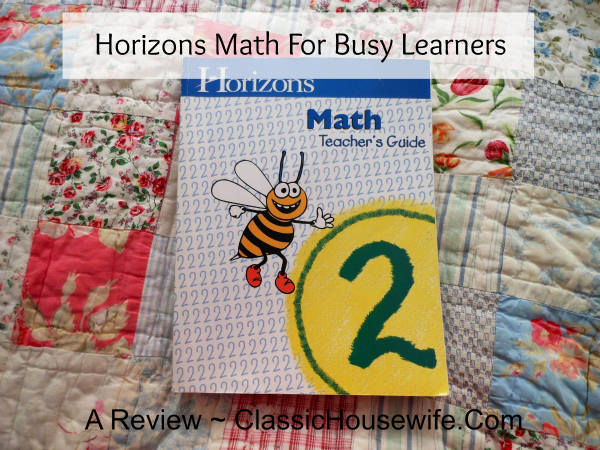
Ever since an Alpha Omega representative took time to comment on my post “Horizons Versus Lifepac,” we’ve been sold. It’s a really good fit for my Drama Queen who grasps the math concepts fairly quickly and easily but tires of a math lesson that drags on too long or gets too repetitive. Imagine my surprise (not) when her younger brother turned out to be the exact same way?
So here we go on Horizons Math, Round 2! My “math-genius-I-might-be-biased” son and his short attention span work well with the short, colorful sections and the spiraling content. I love it when we find something that works and we can stick with it! It’s because of that I decided it was high time for a review, and I’m happy that Alpha Omega agreed! (<– Translation: This is a paid review of the Horizons Second Grade Math Set. But I already love them – that’s not likely to sway my opinion much is it?)
Meet the Horizons Math Set (2nd Grade)
The Horizons Math Set consists of a Teacher Guide and two colorful, consumable workbooks. These are the true workbooks (not worktexts like their LifePac curriculum if you are familiar with those.) For Horizons Math the lessons are in the Teacher Guide. The benefit is that the students have two slim workbooks to complete that don’t have a lot of bulk or unnecessary material for them.
Inside the student workbooks you will find colorful lessons spanning a front and back of one page, broken into small sections and grouped by like process. For example, you might have a section of addition sums, followed by a section of counting by 5’s, followed by a section of matching number words and numerals. The content is spiraling so that as you add new material, you review old material and all the topics rotate through the entire text several times before the year is over. This is great for my math-smart but short-attention-spanned kiddos.
You can find a complete list of the Scope & Sequence for the Horizons materials, as well as sample pages to download, on the Alpha Omega website.
Because the student texts are divided into two workbooks and because the pages are perforated, they’re also very portable. I learned with Drama Queen (who can be kind of hard on her workbooks, folding the cover back, messing with edges of the pages) that it worked best for if we tore the lesson out and put it on a clipboard. Surprisingly my son is much nicer to his workbooks so we can leave the pages in and he can take the workbook with him wherever he wants to go with it!
More About The Horizons Math Teacher Guide
The best thing, for me, about the Teacher’s Guide is that at this age I can use it as much or as little as I want/need. There are days my son wants to do “all the stuff” at the beginning of the lesson and there are days he wants to just skip to worksheet. My daughter would take it or leave it. And there are some days where I step in as teacher and say, “We’re going to do all the stuff today.” It goes with our relaxed, eclectic homeschool style.
Okay, so “all the stuff?”
Inside the Teacher Guide you find all kinds of nifty stuff. Let me take you on a tour of the Teacher Guide.
The Introduction
At the beginning of each Teacher Manual, you’ll find a readiness evaluation, some tips for preparing and teaching a lesson (explaining all the sections and symbols in the teacher lessons,) and a scope and sequence for the year. Next you’ll find three master lists for manipulatives needed, concepts learned, and additional worksheets and which lessons they appear in. There is a little bit of prep work but the lessons are all laid out for you. If teaching math is something you’re not confident with doing, the Teacher Guide is going to help walk you through it.
The Lessons
The next section in the Teacher Guide is the actual teacher lesson plans. There are 160 lessons in the Horizons Math year, and each one is one is prepared for you. Beginning with a list of concepts and objectives for the lesson and a few teaching tips, the teacher lesson lists the materials and worksheets needed and then walks you through a list of activities to do with the child. Each lesson starts with an activity or two that is not related to the worksheet (such as counting aloud to 100,) and then moves into a set of activities to do before the child does each section on the Horizons worksheet. This section makes up the bulk of your Teacher Manual.
The Rest of the Teacher Guide
The remainder of the Guide consists of the Answer Key for the lessons, the Additional Worksheets, and the Answer Key for the worksheets. The Teacher Guide really does have everything you need except for physical manipulatives. Using the list of manipulatives at the beginning of the book, you can create a math box to hold everything you need in one place.
Customizing Your Teacher Guide
You can use your Teacher Guide exactly like it is and it will be just fine. In fact, my 2nd Grade Teacher Manual is still exactly like it was when I bought it. By the time my daughter got to 3rd grade, I wondered why I didn’t take it off the binding and put it in a binder? So I did. I added divider tabs for each of the sections so that I could more quickly find what I was looking for. If binders and divider tabs automatically make you feel more organized like they do for me, it’s definitely an option. =)
How We Use Horizons Math With Our Busy Learners
I’m not sure if Drama Queen and Little Prince are more kinesthetic or auditory or visual, but this I do know: they are busy. They’re movers and wigglers – and Little Prince is always in fast forward. Because of their “need for speed,” and because of how easily they grasp new math concepts, they both tune out and get bored (cranky) with long, repetitive lessons. Some days they even get restless with the colorful, short, quickly moving Horizons lessons. Over the past three years we’ve developed some habits for doing our Horizons math with our busy learners.
5 Ways We Adapt Horizons For Busy Learning
- Skip and Cut Out – Especially on extra restless days, if there’s a section with a concept that I *know* they are strong in, I will mark off half the section or let them skip it entirely unless we’ve skipped that a couple times in a row.
- Move Around The Page – For some sections (like filling in the missing numbers from 50-100) I can see them getting tired or frustrated. In that case we will move on to the next section and come back to keep boredom and frustration from really setting in. (Sometimes we even move across the page to the next lesson and come back!)
- Move Around The Room – I let them sit at the table, or move to a chair, or lay on the floor. I want them to be comfortable so that they will be able to focus on the math instead of what their body needs.
- Do as much or as little of the “practice math” out of the teacher book as they *need.* Obviously we have to teach the new stuff, but we don’t have to do all of the practice. Sometimes I know they need to practice a skill or haven’t in a while, so I insist.
- Stop or take a break when they get fatigued. Sitting to do math (or handwriting or reading) can often be exhausting for wigglers. It’s not something they are likely to grow out of but will need to learn how to excel with. Teaching them to take a break *before* they reach critical meltdown is a part of what they will need to succeed.
I’m sure you have all known someone who was really bright and yet struggled in school because they were bored and not sufficiently challenged. My husband was that kind of student, failing when not challenged, excelling when learning at his own pace and with sufficient challenge. I see some of this in Drama Queen and especially in Little Prince.
I do want to teach my children how to do what needs to be done even if it’s boring, but I also don’t want to bog my kids down with unnecessary practice when they have full grasp of a concept. It’s for that reason, combined with their wiggles, that I allow a lot of skipping and moving. I want to make sure that we’re staying at a level of sufficient challenge. If it gets too easy, they *need* to skip ahead to stay challenged. With the Horizons Math, I don’t have to worry about that because I know that Horizons Math is fairly challenging and that all the concepts will cycle back around again. Nothing is going to get “missed.”
Who is Horizons Math a Good Fit For?
I honestly think Horizons Math would be a good fit for *almost* anyone. With the exception of struggling learners, and children who benefit from a Mastery approach to math, Horizons Math is structured well with a good pace and a good steady cycling of concepts. It’s affordable, too. You could argue the full kit is a little pricier than some other options but you get a lot more than you get with those cheaper options, too. (And I don’t mean just the teacher manual but I mean the quality, too.)
Horizons Math is well laid out for the teacher and for the student both. Parents who need the detailed lesson plans, students who love workbooks, and learners who like the interactive activities between sections on the worksheet would all be pleased with Horizons Math.
Visual learners would appreciate the colorful lessons, auditory learners would appreciate the involvement of the teacher in the lessons, and kinesthetic learners would appreciate the hands on manipulatives called for such as flash cards, play money and clock model. The activities at the beginning of the lesson involve all three of these learning styles, and with a little tweaking you could tailor them even more to suit the needs of your child. (I have my son do the worksheets auditorily.)
Our “verdict:” Horizons Math is a very good fit for us, indeed.
*Alpha Omega Publications gave away a Horizons Math Set of for the “Homeschool Edition” of the Mommy Time Party, May 2013.*
Find Alpha Omega on Facebook, Twitter, and on their website.
A very special “thank you” to Alpha Omega Publishing for the chance to review our favorite math curriculum for you. Though I received compensation for my time and for promotion during the Mommy Time Party, I do my best to provide an honest review. All opinions stated here are my own. For more information about how I do reviews, check out my Disclosure Statement and Review Policy.


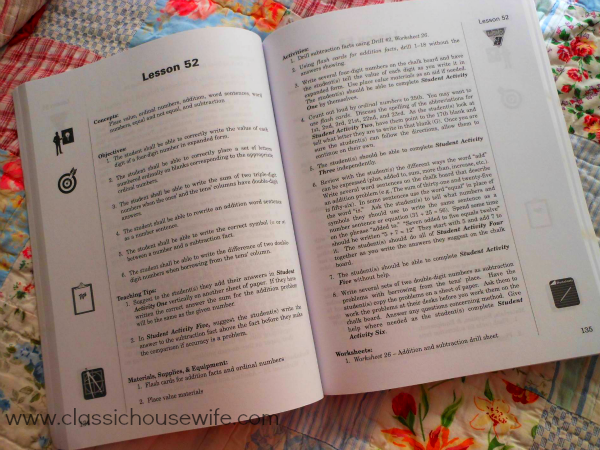
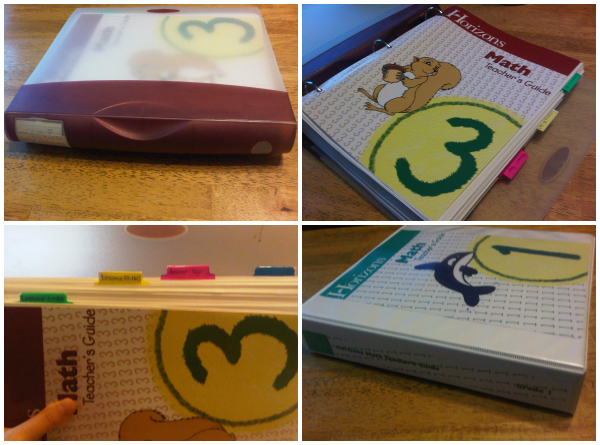
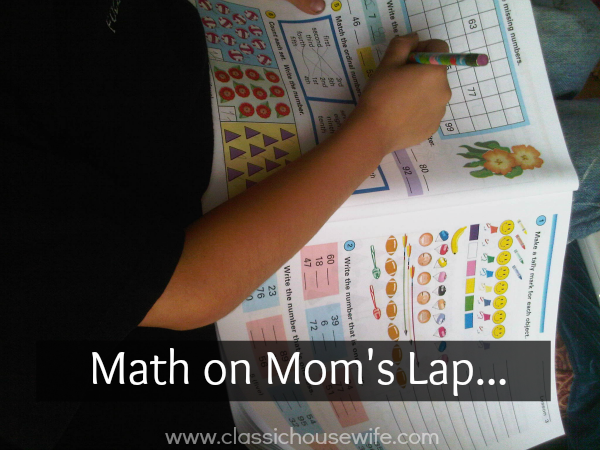
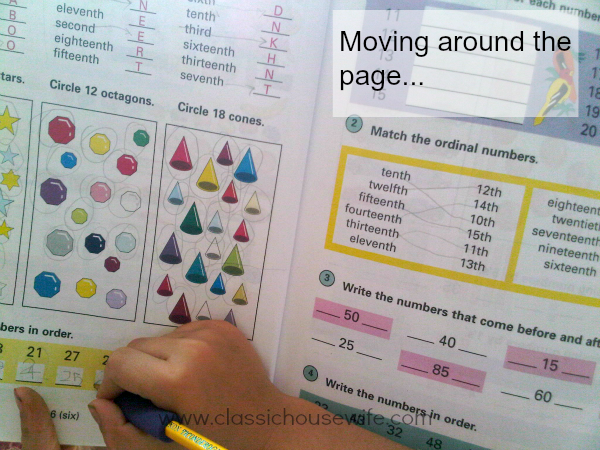
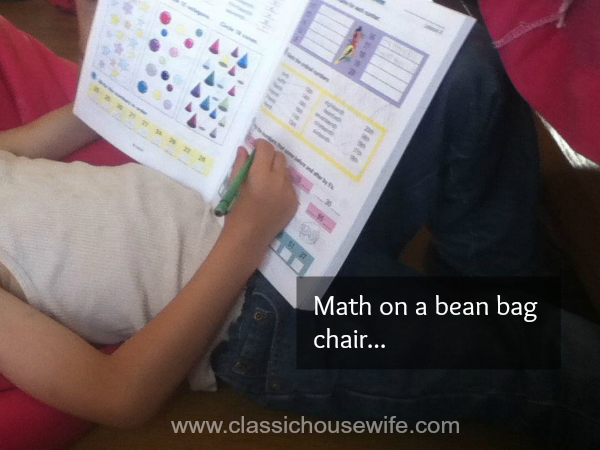
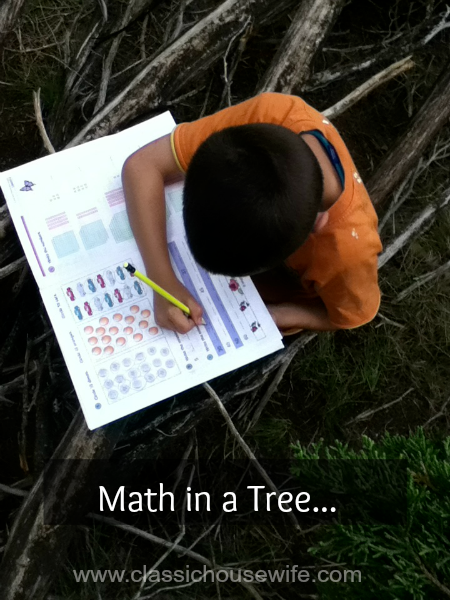
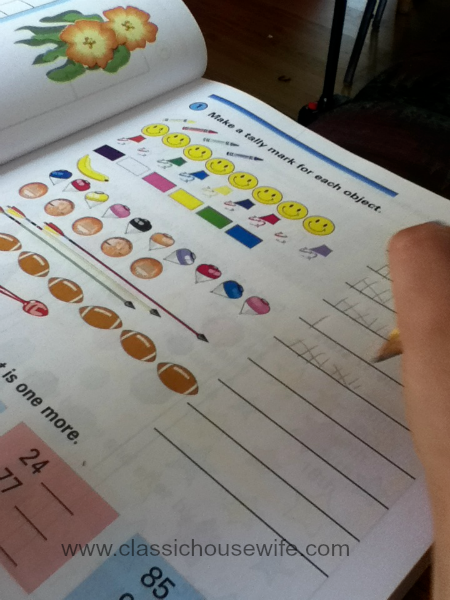
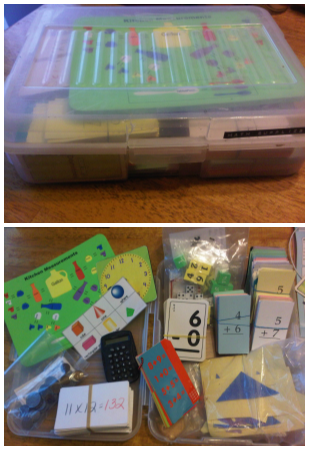

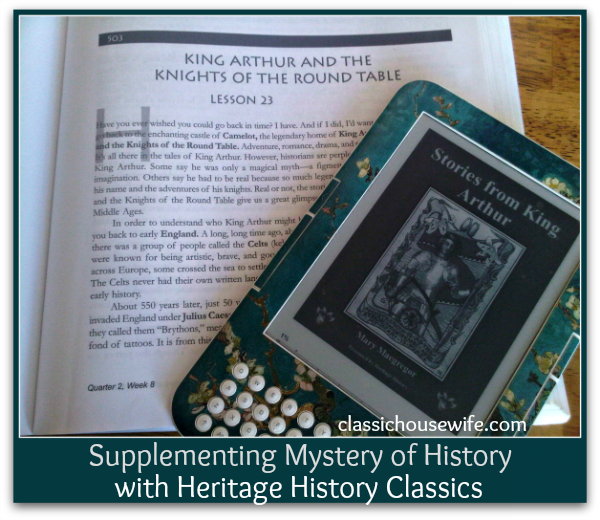
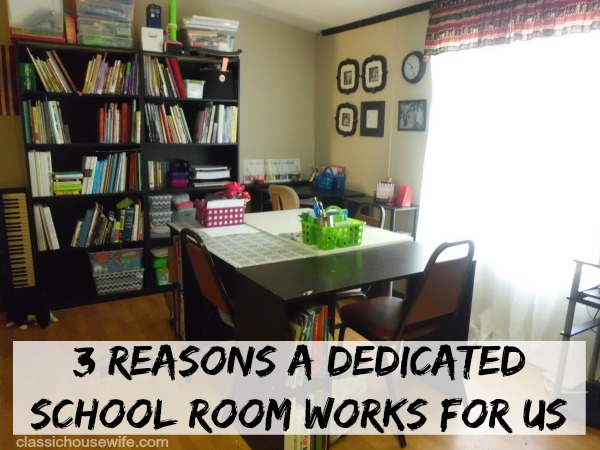

Everything that you said… yes, exactly. I love Horizons Math for pretty much all of those reasons, except that we haven’t used the teacher’s books yet so I have no opinion on those.
Thank you, Karen!
I love Horizon Math! We used it up to 5th and have now switched though. I love what we’re doing, but I miss Horizon Math LOL (guess i’m just set in my ways hahaha) I may add it in as extra practice, just so we can still use it 😛
Yay! I think we’ll probably go through Algebra 1.. I wish they had Geometry and Algebra 2. Maybe by the time we get there, we can talk them into it. ;0)
I am currently looking for a new Math Curr for my kids! This one looks perfect.
I am desperately seeking a curriculum for my busy learner. She is so smart, but she just can’t sit still and wants to go play! We are doing Abeka, and with her being so active, all of the required learning is a little intense for her right now. I was told that Horizons is a spiral, but could sort of fit in a mastery category, sort of. I also think she needs manipulatives too. I would LOVE to win this!!
Just purchased Horizons Math K for my 2nd child. Looking forward to trying it out!
Biggest challenge is keeping it interesting for each child (ages 9, 5, and 4). Luckily, they all love Math!
I would love to try horizon math
Would love to win this!
I biggest challenge with teaching math is that most of the math programs we’ve used have been so boring for my children.
We have not used horizons YET, I hear lots of good things!
Yes we have used it for many years. I love how colorful it is probably the most!
Our biggest struggle is attitudes when distraction hits and it can it at the start of the lesson. We have not used Horizons but maybe the colorfulness is just what we need to draw them in. ??
We just switched to Horizons at the beginning of 2013 and my children absolutely it! For one, it’s colorful – and I like that. 🙂 They also like to write in the books – something I never did, we always used a notebook so the books could be used with younger siblings later on. But a great sale and baby on the way led me to break down and just make life simple. Horizons made that a piece of cake!
We have not used Horizons but my oldest is starting kindergarten this year, so it’s not really our time yet. My biggest struggle is figuring out HOW to teach things.
I haven’t used Horizon Math but I would love to try it out! This sounds wonderful and something that my son would like!
Im starting homeschooling next August with two of my daughters, 11 year old and 2 year old, OMG i have so many questions, im good at math but teach geometry, i think there be trouble… thank you for the giveaway.
We just started math k and love it so far!
We have used horizon K and loved it. I would love to be able to get some of the higher grades of horizon too.
I’ve never tried Horizons. We’ve switched math a couple of times for my 9 yr old and still just can’t seem to find a good fit. Actually, he just REALLY doesn’t like math at all so it’s challenging to get him to stick with it and have a good attitude about learning. Would love to try this and see if it helps!
We have used Horizons and love it! My ydd is autistic and very bright. She flies through curriculum and it’s not pretty if she feels like “they” are dumbing things down for her or repeating too much. Nothing quite like having a 5 year old make you feel inept for trying to teach her something you should know she’s already mastered, lol. I like that Horizon moves, but does review. It seems to be the perfect balance for Miss Demanding who informed us just before starting homeschool after two years of public school special preschool “I want to do both… Read more »
We used Horizons in Kindergarten and plan or use it next year. I wish we used it in first grade. Live and learn I guess!!
My son struggles with math so I look forward to exploring Horizons Math.
I actually love math, so it’s been very easy for me to teach. The hardest thing for me is when my kids are ready to go past the basic math (counting, number/shape/color recognition, simple addition), but are not yet mature enough to be able to understand more difficult things, even though they desire to (ages 3-5, especially). They get frustrated because they WANT to do more, not just the same old stuff, and I get frustrated trying to keep finding new concepts and new ways to teach the old concepts that will keep them from getting bored!
Yes! I have used Horizons for my oldest for 2nd grade and now for my middle son for Kindergarten. My younger one gets frustrated with the amount of review, but I let him do half of the problems or skip them if its something he totally understands. I haven’t found any other program at this stage that I like as much as Horizons!
I haven’t ever tried Horizons Math! My daughter and I love Math so we would love to try this curriculum. We use their Language Arts program. I just purchased the next level.
I hadn’t ever really looked at Horizons before, but after reading through your review, I really like it! Thank you for the opportunity to win!
We used Horizons 5th Grade math and loved it….
This is our 3rd year using Horizons!
Biggest challenge is staying focused (and I mean ME). DD gets frustrated so I get frustrated and it is easy to give up for the day. We tried Horizons many years ago and it was a good for my oldest at the time.
I haven’t used horizons before but I am curious if a spiral approach would be better. my daughter hates to be bored!
I haven’t used Horizons before, but I have always heard good things about it. Algebra has never been my friend, and I will be teaching it soon. I hope to find a program that makes sense to me so I can teach it
Well thankfully btwn. Horizons and Teaching Textbooks we don’t have too many challenges, times table memorization is always a hurdle, we love Horizons have used it for 16 yrs. for K-5th grade
sounds like it might be a good fit for us.
So much easier than the other giveaway entries! Thank you!
I have used Horizons math for one semester, but I didn’t understand what it was doing so I stopped using it. But I have heard other mommas reviews and I would love to try it again. My oldest is entering 2nd grade and I have a little one entering Kindergarten.
My daughter will be starting kindergarten this fall. We would love to try this out.
Getting my boys interest.
I think my biggest challenge with math is PATIENCE! Right now we’re in a 2-yr KG program and my son struggles with writing his numbers and flipping them backwards. Sometimes he has to write out the same number 8 times before he gets it right. I truly need to step back & let him take his time.
This Math program sounds wonderful, and something my son would enjoy. Thanks for the giveaway opportunity!
We have not used Horizons Math. It looks amazing though. I would love to give it a try. My daughter is just learning her numbers now.
We have not used Horizons Math but your review made me consider it. I have a hard time keeping my artsy, language-oriented daughter interested in math.
I personally have always struggled with math, but I’m confident during these elementary years:) I want to empower my children to be confident in their math skills though and never back away from a challenge.
I have never been confident about math but I’m trying hard to teach my children to love math.
We love Horizons math! I would love to win curriculum for next year.
ive heard good things about horizons math! i would choose the 2nd grade set if I won! thanks for the chance
*kelly
kelly-tillotson@hotmail.com
I’d love to use this with my First grader!
eloiseolivia@yahoo.com
My daughter is doing her horizons math right now. I am very pleased with it and will be using it again next year. I would love to win level 5.
We love Horizons Math and have been using it since the beginning of our Homeschool journey!! Would love the chance to win this!
pbwacademy@yahoo.com
We used Horizon this year for Kindergarten, my daughter loved it. its amazing to see her able to do the lessons with little help because she is learning it so easily.
We have never used it and I was looking into it for our K this year, have heard some good things about it. Enjoyed your review. Thank you.
We’ve used Horizons Math for the past the three years and it has been a wonderful fit for us!